Welcome to the capital of the United States! When it comes to Washington, DC what may come to mind may be the politics and the buttoned up politicians but I can assure you DC is so much more than that. Being such a diverse city, you’ll find a mix of languages, cultures, and cuisines in each DC neighborhood. To make sure you experience it fully, I’ve put together a comprehensive guide for all things DC that should help you figure out when to visit, how to get around, where to stay, where to eat and what to do in DC.
What to Know Before Visiting DC
The Best Time to Visit Washington DC
As a DC-native, I definitely find myself loving the Fall and Spring seasons in DC the most, especially with the good weather and activities that can be found during these times of year.
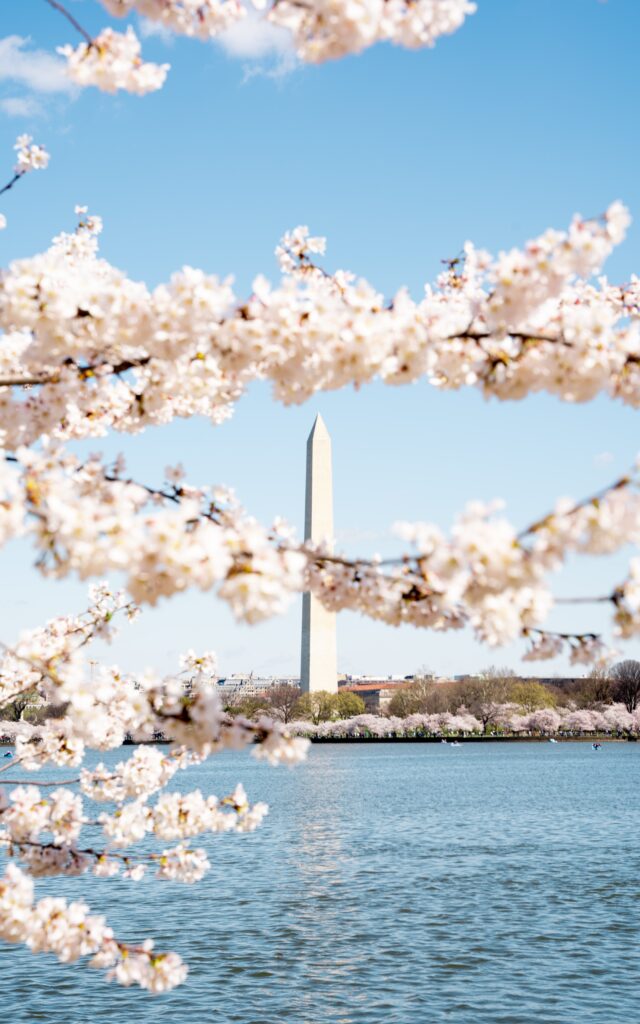
Of course you’ll definitely find tourists in the city all year round but something about the Fall and Spring season in DC just hits differently. Since DC has 4 distinct seasons, you’ll find that the city can look very different throughout the year. The Fall is the perfect time to see the leaves change from summery green to the warm orange and reds of autumnal foliage. The Spring is when DC’s cherry blossoms really take center stage. Filled with a sea of white and pink, the cherry blossoms are definitely one of the annual highlights on the city. You’ll find plenty of celebrations across the city for when these pink flowers start to bloom.
How to get to DC
If you plan to fly into DC, the good news is that you’ll have 3 options to choose from: Dulles International Airport (IAD), Ronald Reagan National Airport (DCA), and Baltimore-Washington International Airport (BWI). But do be aware that not all these airports are created equal!
For starters, DCA is an easy 20-minute metro ride from the city center whereas IAD and BWI are both over an hour away from the city center. For those on a time crunch and flying domestically, I would definitely recommend flying into DCA as its the most convenient and closest to the city. For those flying from international destinations, IAD is a great option because it is metro-accessible thanks to the new extended silver line route.
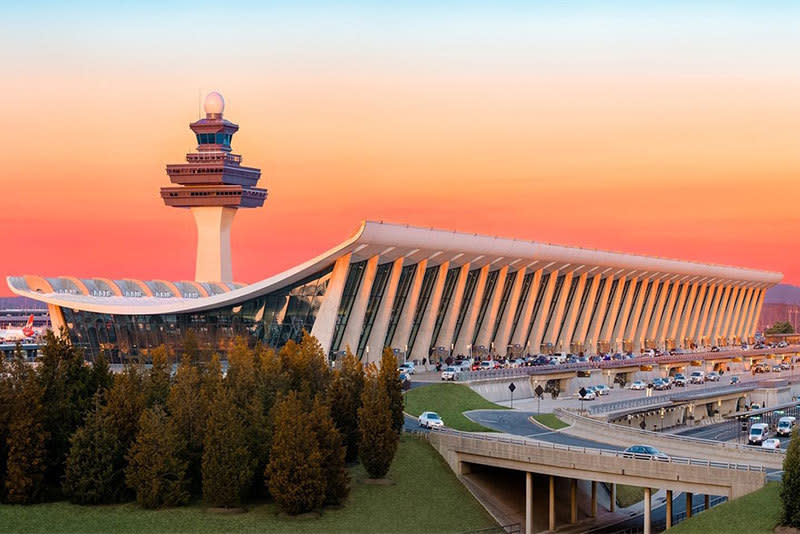
Transportation from BWI is a little bit trickier as you’ll have to take the MARC train (different from the DC metro system). BWI has a shuttle that will drop you off at the BWI Rail Station where you can catch the MARC train to Union Station. FYI, a lot of the budget airlines will be serviced out of BWI so if you’ve snagged a great airfare deal from a budget airline (we love scoring budget-friendly flights!!), you will likely fly into BWI. I would just recommend planning accordingly. Alternatively, you can also choose to grab a ride to BWI. Total drive time would take a little over an hour depending on traffic.
DC is also connected by a variety of bus and train routes for those are traveling from nearby cities. Coming in and out of DC by train or bus will take you through Union Station where it services Amtrak and most major bus operators (ex. Greyhound, Megabus).
How to get around DC
Now that you’ve made it into the heart of the city, your next step is probably figuring out how to get around the DC area. Downtown DC itself is a very walkable area. In fact, it’s been consistently rated as the top most walkable regions in the United States. If you are able, I would highly recommend walking around downtown DC, especially the National Mall, as it’s one of the best ways to see the monuments and immerse yourself in the DC neighborhoods.
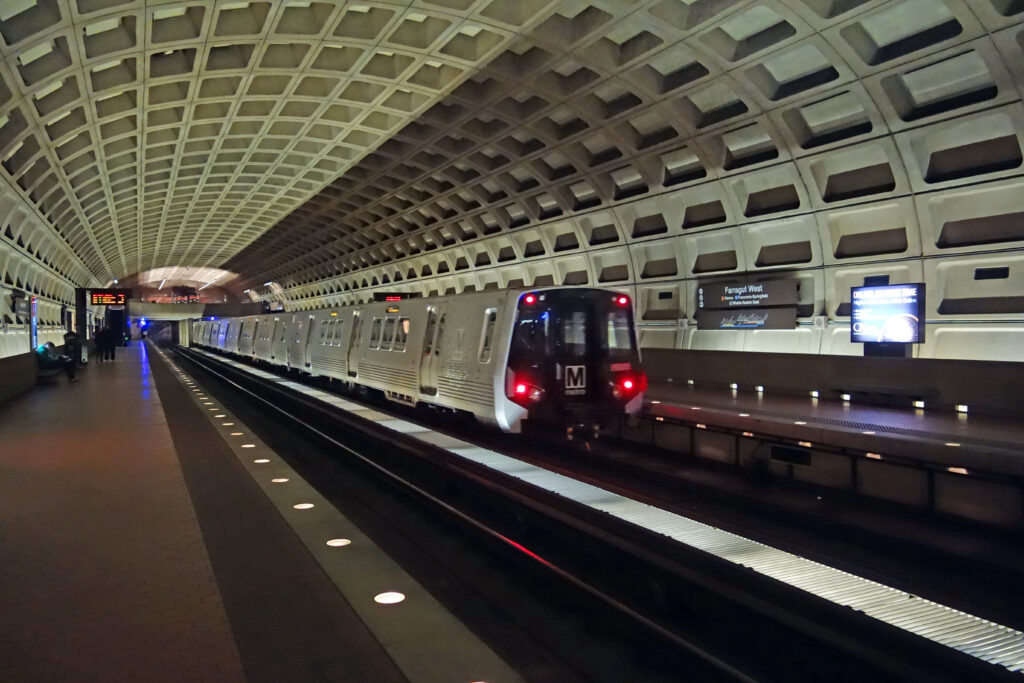
Similar to many metropolitan cities, DC also has a great public transportation system that will get you around the downtown area and the general DMV (aka “DC, Maryland, Virginia”) areas. Unless you plan to go to an area far outside of DC, there’s really no need to rent a car.
By Metro. With an extensive system throughout DC and the greater Washington area, the Metro will probably be one of your fastest ways to get around by public transport. Fares are determined by the distance traveled and whether or not it is peak hours. They can range anywhere from $2 – $6. The exception are weekends and after 9:30PM on weekdays where fares are a flat fee of $2. Metro fares can be paid at the station kiosks or with a physical or virtual Smartrip card.
By Bus. In DC, you’ll find two bus systems: Metrobus and the Circulator. Both bus systems take fare payment by Smartrip card or by cash on the bus itself. Unlike the Metro, the bus systems run on a flat fare ($2 for Metrobus and $1 for the Circulator).
Depending on how long you plan to stay in DC and how often you think you will use the Metro and Metrobus systems, an unlimited day or multi-day pass may be worth looking into.
Bonus tip – I would recommend using the app Citymapper if you are primarily looking to get around the DMV area by public transit. I find that Citymapper is a lot more accurate than Google Maps in determining public transit times and routes.
By Rideshare. Like many major cities, DC has plenty of rideshare options including Lyft and Uber. I find DC’s rideshare fares run on the lower end compared to other major cities like LA or NYC.
By Foot. Again, DC is very walkable! I would even go so far as to say that certain parts of DC, like the National Mall, are best enjoyed by foot. A lot of attractions within the downtown area are within walking distance from one another so it’s very easily accessible. Plus, walking around the city gives you a great chance to really take in the city and experience it as a local.
By Bikeshare. DC’s main bikeshare is the Capital Bikeshare system. You’ll find these bright red bikes parked in a line at their terminals all throughout the city. The bikes can be rented for $8 a day or $0.05 a minute. While certain streets throughout the city do have bike lanes, do be aware of the drivers as DC drivers can get a bit aggressive.
How Much Does DC Cost
Like many of the big cities, DC is not cheap. While transportation and attractions are fairly inexpensive, hotels and dining out will likely be what takes up the majority of your budget. A nice hotel in the city center will run you anywhere from $150 – $200 per night. If you’re looking to splurge, a stay at a luxury hotel can start at $500 per night.
While it isn’t cheap, if done with a strategy, it doesn’t have to be break the bank either. With tons of local shops and plenty of free attractions, DC still has lots to offer in terms of budget friendly travel.
Where to Stay in Washington DC
There are so many unique neighborhoods in DC that each have their own styles and characters. Depending on what you have planned in your itinerary and budget, there is definitely a neighborhood that is suited for your trip.
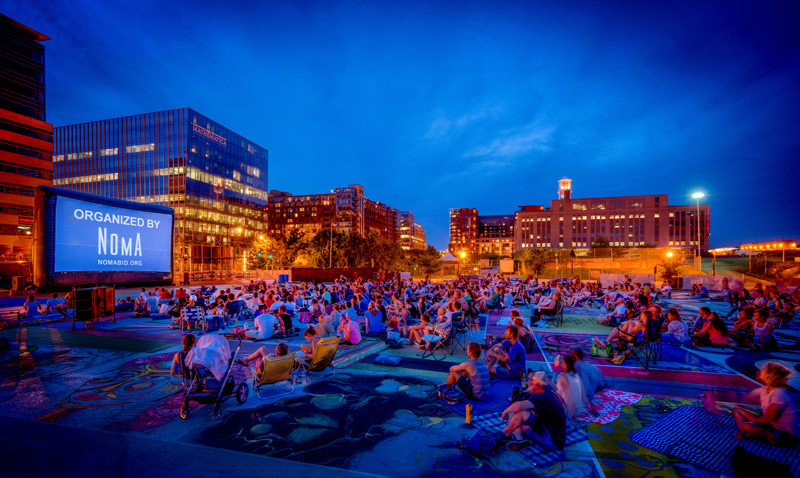
For first time DC visitors, I would recommend staying in the Dupont, National Mall, or Penn Quarter neighborhoods. This will put you right in the middle of city center making all the iconic attractions very easily accessible. Here are some of the other neighborhoods I would recommend:
- Georgetown is perfect for those looking for a more historical stay. You’ll be surrounded by cobblestone streets, narrow alleys and canals, as well as be within walking distance to the Georgetown waterfront.
- The Wharf is the definition of modern and sleek. In recent years, its been renovated to become one of the top neighborhoods for dining and entertainment. Not to mention it’s also home to icons such as the Municipal Fish Market and Gordon Ramsay’s Hell’s Kitchen.
- NoMa has been an up-and-coming area for the past years and features a variety of trendy restaurants and shops that now occupy restored historical buildings. While there, check out Union Market, a restored grocery and specialty food hall.
- Foggy Bottom is filled with energy and puts you right in the center of the George Washington University campus. It’s a vibrant area that sits just west of the White House and other iconic attractions.
- Arlington, Virginia is perfect for those looking for something quieter and away from the hustle and bustle of the city. Located just across the Potomac River in Northern Virginia, Arlington is home to many young professionals and families.
What to do in Washington DC
Tour the Monuments
Of course you have to see the monuments! It’s one of the most iconic and prominent aspects that makes DC stand out from other cities. Just walking around the National Mall will have you surrounded by these monuments marking historic events in American history. If you’re looking for more information about the monuments, there are plenty of different types of tours ranging from walking tours, biking tours, and even segue tours.
To get a more unique view of the monuments, stop by the Lincoln memorial around dusk to watch the sunset over the Potomac river. Once night hits, each monument is also lit up so you’ll be able to see their white marble gleaming against the dark backdrop of the night sky.
Spend a Day (or night!) at the Museum
In my opinion, DC’s museums are top-tier. There are so many of them to choose from each with extensive collections of art, cultural artifacts, and just cool exhibits in general. DC is home to the 19 Smithsonian Institutions all of which are fantastic and free to visit!
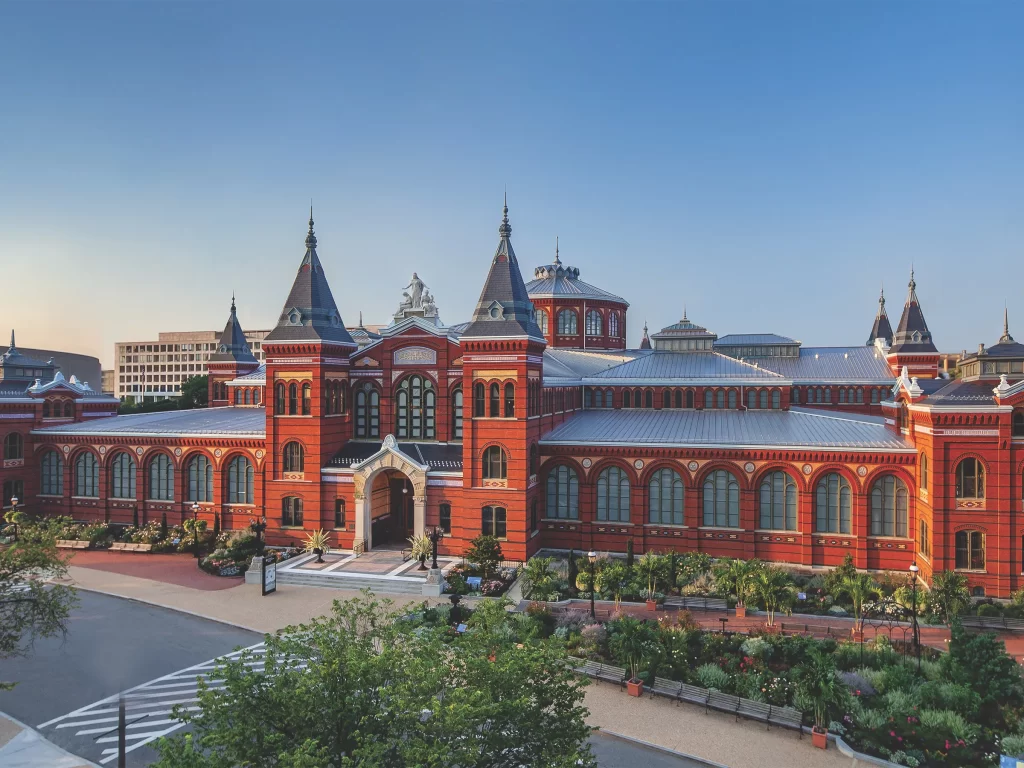
The museums are generally a pretty popular field trip destination so if you want to avoid the crowds of students (and just crowds in general), I would recommend visiting the museums when they open their doors at 10AM. This will save you the time waiting in the security line to get into the museums and save you from fighting the crowds as well.
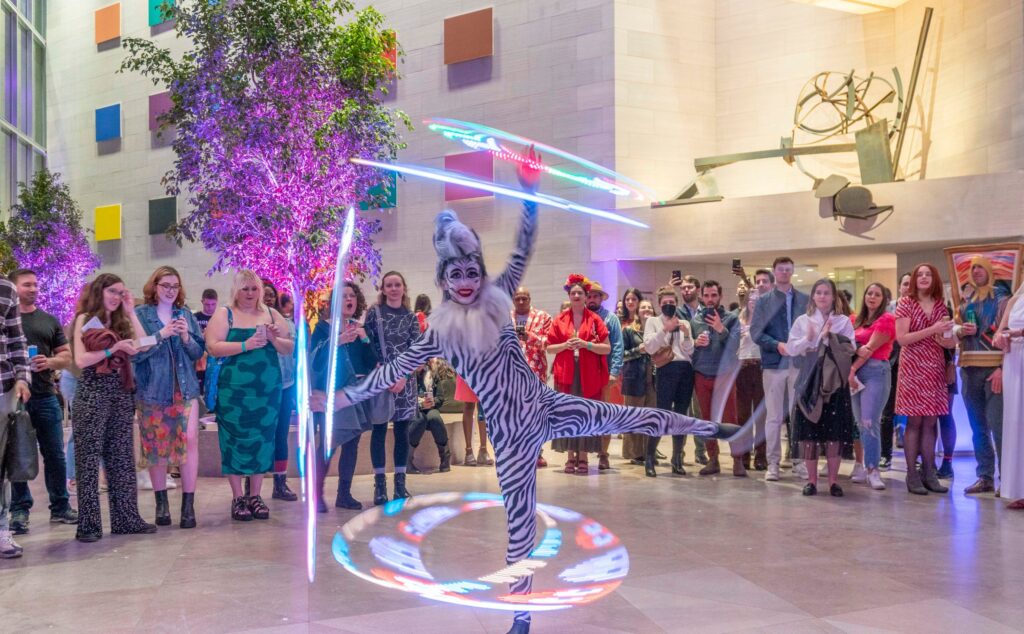
Most museums close their doors at 5PM, however, throughout certain times of year, some museums will hold after hours programming. One of the most iconic are the parties held by the National Gallery of Art at their National Gallery Night. If you need some museum recommendations here are some of my favorites:
- Natural History Museum
- Air and Space Museum
- National Zoological Park
- Renwick Gallery of the Smithsonian American Art Museum
Picnic and Plane Watch at Gravelly Point Park
If you’re a fan of picnics and planes, then this one is for you! Gravelly Point Park sits right on the Potomac River across from Ronald Reagan National Airport making it the perfect spot to watch the incoming planes land on the tarmac.
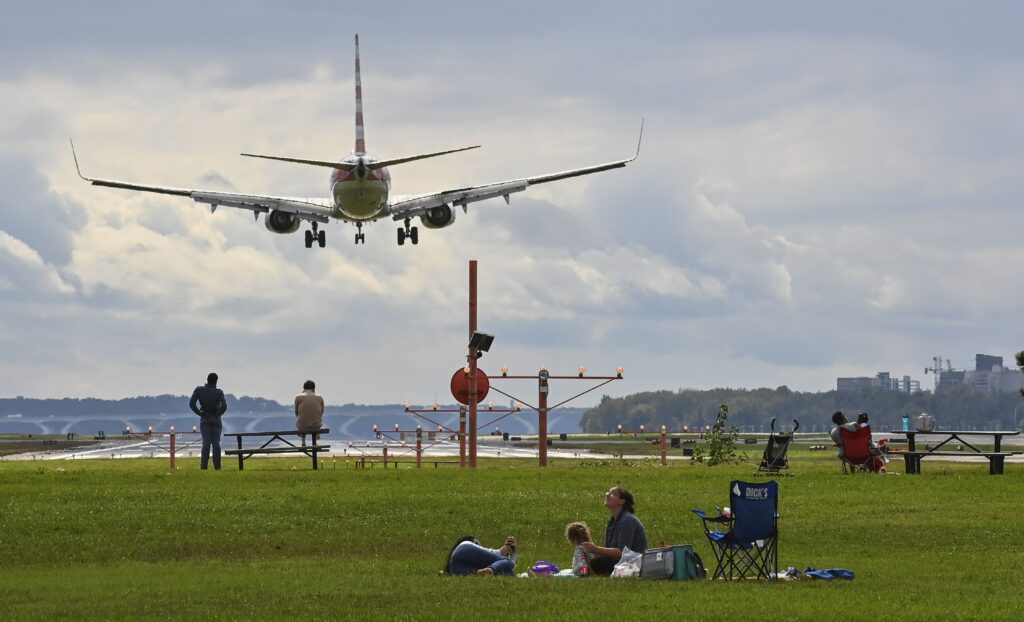
Set out a picnic blanket and watch as the planes literally fly over your head. If you time it right, it can make for some great photo ops! Just be warned that the planes do fly pretty close so they can get quite loud.
Get the Best View of DC
While many may find themselves flocking to the Washington Monument for the aerial views of Washington DC (which I totally still recommend!), not many know that the best view is actually from across the river. For 360° views of DC and northern Virginia, head to The View of DC.
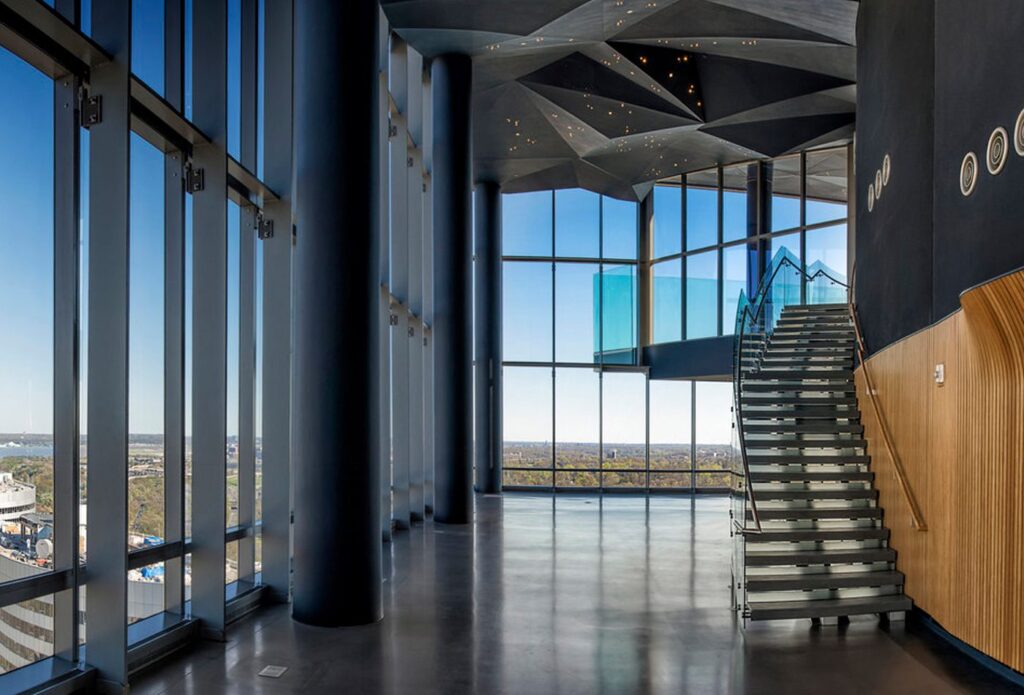
Located in Rosslyn, this observation deck is just one Metro station away from Foggy Bottom or an enjoyable 20-minute walk across the Key Bridge from Georgetown. With floor to ceiling windows, you’ll literally be able to see everything in the area. From the monuments to Arlington Cemetery to even the airplanes taking off from Ronald Reagan, the View is hands down the best way to see DC from above. Also, admission is free! Just make sure to bring a valid ID for verification.
Spend an Afternoon Shopping Georgetown
Georgetown is the epitome of charming. With its red brick buildings, historic canals, and cobblestone streets, DC’s oldest neighborhood is definitely worth a visit. You could easily spend an afternoon exploring the local stores and name brand stores of Georgetown’s M street.
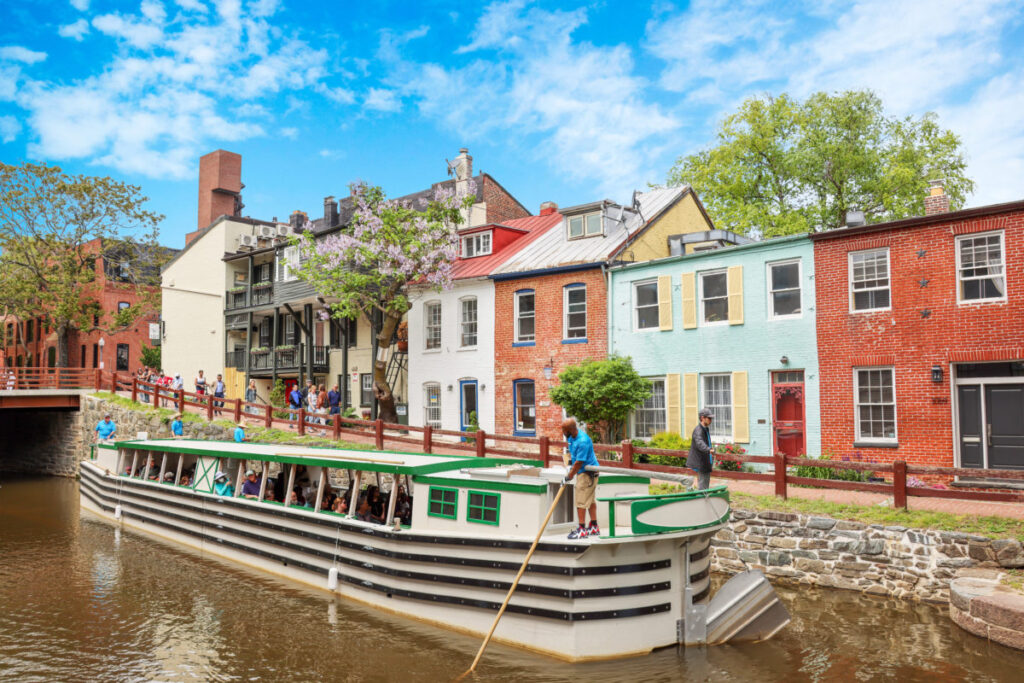
Right up the street, you’ll find Georgetown University. This area is definitely characterized as a college neighborhood where you’ll see students hanging out on weekends and after class.
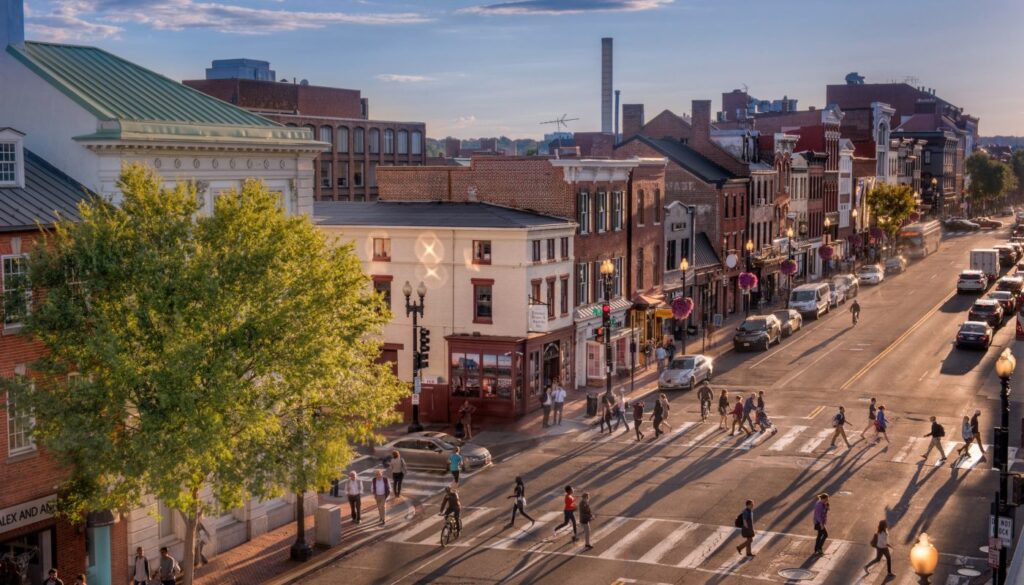
Along M Street, you’ll also find plenty of charming restaurants and bakeries, however, for those on a budget, do be warned that Georgetown is one of the more expensive neighborhoods in DC.
With high end restaurants lining its streets and waterfront, Georgetown doesn’t offer up too much in terms of cheap eats (the exception here would be Falafel Inc’s $5 bowls which are oh so good).
Stroll the Waterfronts
One of my favorite aspects about DC is how many waterfronts there are throughout the city.
You may not normally think of DC as being a city of boats, harbors, and waterfront boardwalks but it certainly is! Better yet, like DC’s neighborhoods, each waterfront has their own unique character that distinguishes it from the others.
Come in the warmer months and you’ll be treated to events like outdoor concerts and movies taking place along the Potomac river.
If you’re feeling adventurous, most of the waterfronts also have boat houses offering kayak and paddle board rentals. Both are great ways to see the DC skyline from the water!
Lounge at a Speakeasy
If you’re looking for nightlife in DC, look no further than the abundance of bars and speakeasies in the city!
In the 1920s, America went under a Prohibition era that banned all alcohol in the country. That’s when the hidden underground speakeasies started popping up.

Hidden in basements, attics, and disguised as other businesses, these speakeasies soon gained popularity. If you can find their discreet entrances, you’ll be treated to all different types of drinks throughout the city’s speakeasies.
Explore Outside of DC
DC isn’t only just monuments, museums, and politics! There are a ton of neighborhoods just outside of DC that have tons to offer too.
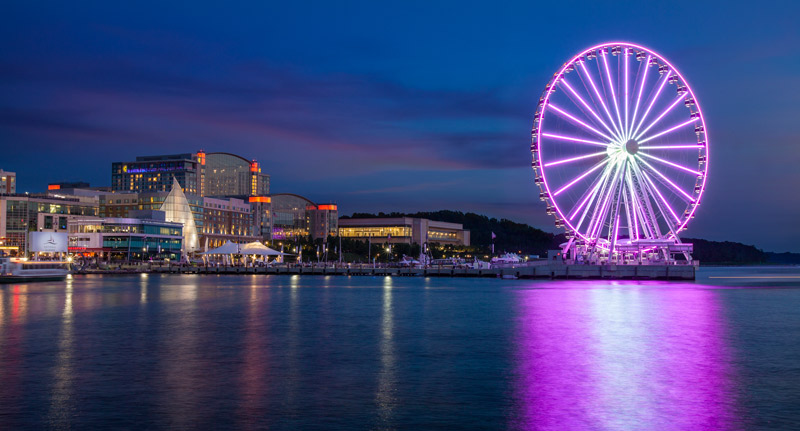
Head south of the Potomac river and find yourself in historic Old Town Alexandria. Or head north to Bethesda and Rockville where you’ll find some of the best Chinese and Taiwanese cuisines (trust me, it’s way better than downtown Chinatown).
If you have a bit more time in the city, these areas are definitely worth a visit and make for a great way to get to know the local areas.
- Historic Old Town Alexandria
- National Harbor
- Bethesda, Maryland
- Rockville, Maryland
- Arlington, Virginia
- Mount Vernon
- Great Falls National Park
Wrapping Up…
Museums, parks, monuments, and good food. There’s absolutely no shortage of fun things to see and do in Washington DC! I hope that this guide was able to give you a starting point for planning your trip to Washington DC and the areas surrounding it.
Enjoy your time in the nation’s capital!
2 Comments